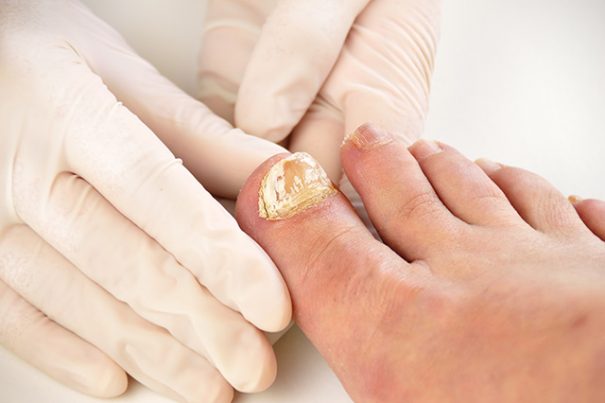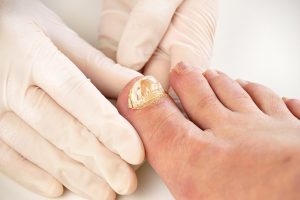
Tinea unguium – causes, side effects and treatments at NaturalPedia.com
Wednesday, August 01, 2018 by Michelle Simmons
http://www.naturalpedia.com/tinea-unguium-causes-side-effects-and-treatments-at-naturalpedia-com.html

Tinea unguium, also known as onychomycosis, is a fungal infection that affects either the fingernails or the toenails. However, toenails are more commonly affected than fingernails. The overgrowth of fungi in, under, or on the nail is the primary cause of tinea unguium. Fungi thrive in warm, moist environments, causing them to naturally overpopulate. The fungi that commonly cause tinea unguium are dermatophytes, such as Trichophyton rubrum; yeasts such as Candida albicans, and; molds, such as Scopulariopsis brevicaulis and Fusarium species. Fungal nail infection is more common in people older than 60 and in younger people who share communal showers, such as swimmers and athletes.
The common risk factors of tinea unguium include the following:
- A nail that has been damaged recently is more likely to become infected.
- Constant washing of the hands may damage the protective skin at the base of the nail, allowing fungi to enter.
- Fingernail infection may occur after a toenail infection has become established. This may occur because the fungus may spread to a finger if you scratch your itchy toes and toenail.
- People who live in hot or humid climates are also prone to developing fungal nail infections.
- People who smoke have an increased risk of developing a nail infection.
- People with diabetes, psoriasis, poor circulation, a weakened immune system, and a general poor state of health are more likely to get tinea unguium.
- Spread from a fungal skin infection.

Known symptoms of tinea unguium
Tinea unguium may affect part of the nail, the whole nail, or several nails. The common signs of a fungal nail infection are a distorted nail that may lift off from the nail bed, an odor coming from the infected nail, and a brittle or thickened nail.
The visible signs of a fungal nail infection may include the following:
- A crumbling corner or tip of the nail, which is known as distal onychomycosis
- Flaking white areas on the nail’s surface, which may include pits in the nail
- Loss of the nail
- Subungual hyperkeratosis or scaling under the nail
- White or yellow streaks on the nail, which is called lateral onychomycosis
- Yellow spots at the bottom of the nail, which is called proximal onychomycosis
Body systems harmed by tinea unguium
The body system harmed by tinea unguium is the integumentary system, as it affects the nails.
Food items or nutrients that may prevent tinea unguium
Here is a list of antifungal foods that can help prevent tinea unguium:
- Apple cider vinegar
- Cayenne pepper
- Coconut oil
- Fruits, such as white nectarines, white peaches, bananas, brown pears, and dates
- Garlic
- Ginger
- Gluten-free whole grains
- Pumpkin seeds
- Vegetables like cabbage, spinach, cucumber, tomatoes, onions, turnips, parsnips, rutabagas, and broccoli
- Yogurt
Treatments, management plans for tinea unguium
Natural treatments for fungal nail infections include the application of snakeroot extract, tea tree oil, oregano oil, vinegar, or garlic, and taking olive leaf extract capsules with meals twice a day.
Where to learn more
- 15 Natural Home Remedies for Ringworm
- Your nails and your overall health (press release)
- What You Can Do About Diabetes-Related Fungal Infections
- Top 12 Natural Anti-Fungal Essential Oils
- 10 Extraordinary Uses Of Tea Tree Oil
Summary
Tinea unguium, also called onychomycosis, is a fungal infection that affects either the fingernails or the toenails.
Tinea unguium can affect a part or the entire nail or several nails.
Tinea unguium generally causes a distorted nail that may lift off from the nail bed, an odor coming from the infected nail, and a brittle or thickened nail.
Tinea unguium can be treated with the help of snakeroot extract, tea tree oil, oregano oil, vinegar, or garlic, olive leaf extract capsules.
Sources include:
Tagged Under: Tags: Tinea unguium





